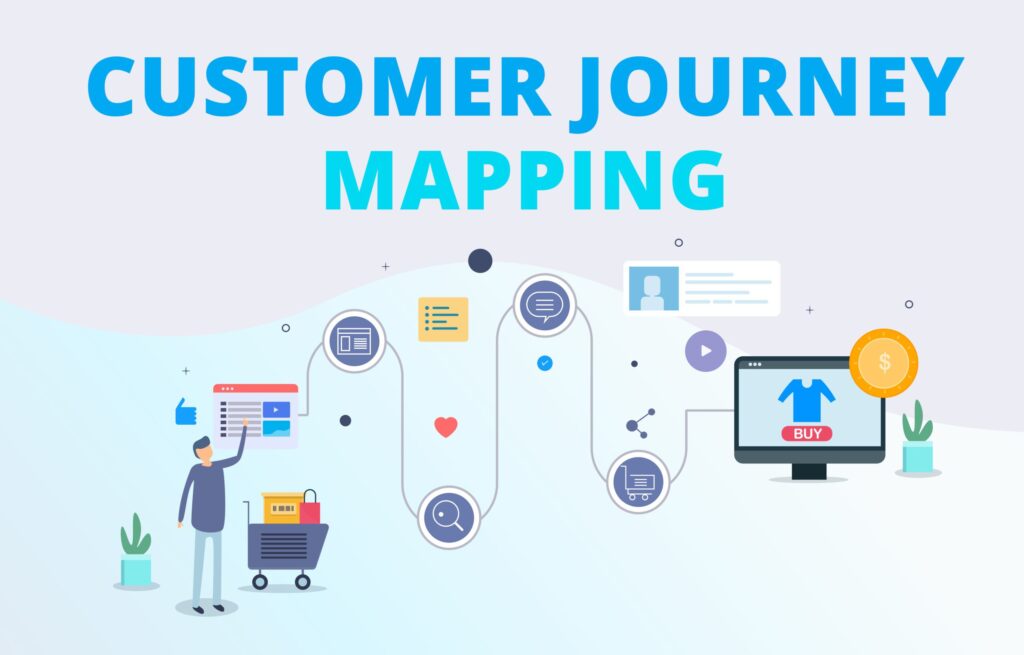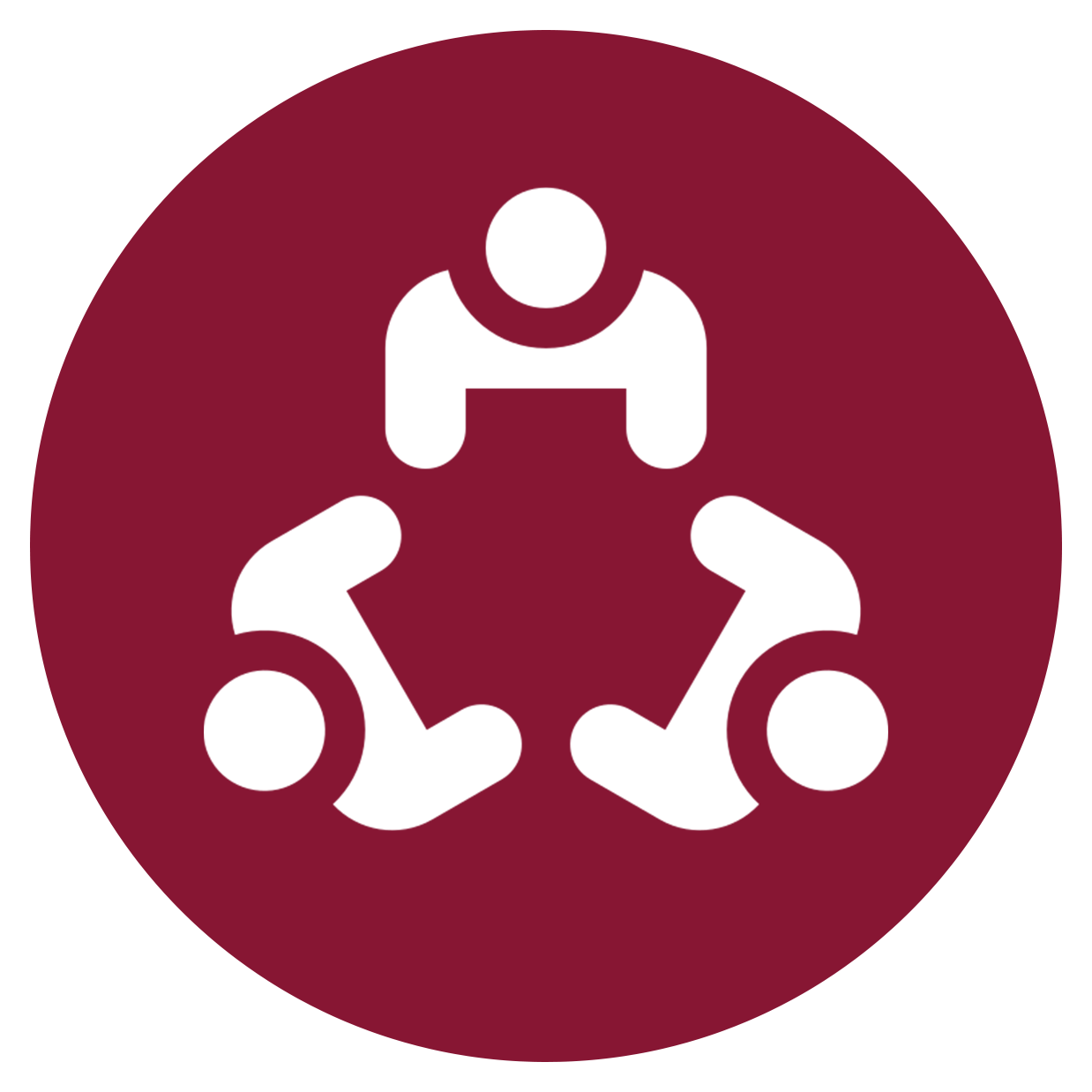What Is Customer Journey Mapping?

Table of Contents
Key Takeaways:
- A journey map aligns an entire organization around the customer by encouraging employees to consider customer perspectives – their feelings, needs, and expectations.
- A major objective of customer journey mapping is identifying and closing gaps between customer expectations of service and the reality the customer experiences.
- Hearing directly from its customers is the best way for an organization to know what makes it stand out from competitors in the minds of its customers.
- An organization’s differentiation as one worthy of loyalty is tested in every customer experience, by whether the customer perceives the unique value of the organization at that point in time.
Introduction
How do you gain your customers’ trust and loyalty? One of the most effective ways is to step into their shoes to understand their needs and challenges. A properly constructed customer journey map is a tool that gives you that perspective.
The purpose of a journey map is to align an entire organization around the customer. A well-designed and executed journey map generates loyalty by closing the gap between customer expectations and the experience actually delivered.
Many businesses, including financial institutions, are adopting customer journey mapping tools and methodologies in their efforts to differentiate themselves through superior CX performance. The popularity of customer journey maps is acknowledgment that, today, businesses have to look differently at themselves, at how they deliver service to people, and at how they position themselves in their marketing to both current and potential customers.
This article starts with an overview of the purpose and methodology of customer journey mapping, then focuses on the application of journey mapping resources and techniques to improve service delivery and the customer experience.
What is the Customer Journey?
The customer journey is the path a customer takes with an organization over time – from initial contact with the company through a completed sale and beyond. It consists of every experience or touchpoint the customer has with different functional areas of the organization.
Gartner defines the customer journey as the series of connected experiences that customers desire and need — whether that be completing a desired task or moving from prospect to customer to loyal advocate of a business.
In another sense, but no less accurately, the customer journey is the story of your customers’ relationship with you: how people behave when they do business with you, either online or face-to-face, and what you can do to improve their experience, so they keep coming back to you for solutions (and encourage other people to do business with you, as well)!
What Is a Customer Journey Map?
A customer journey map is a CX and organizational process improvement tool used to guide delivery of personalized, cohesive experiences. Done properly, customer journey mapping can be a valuable tool of CX management by removing friction from the customer experience, personalizing service and sales delivery, and improving process efficiencies.
When you document the customer journey, you are mapping out different behavioral scenarios using existing data, including data directly from the customer. Using customer feedback in designing a journey map ensures that the content reflects the experience of your brand from the customer’s own point of view, rather than from a systems or business process perspective. After all, there is a distinct difference between information ABOUT the customer and information FROM the customer!
Customer journey maps combine elements of two powerful techniques – storytelling and visualization – in order to help customer service teams understand and address customer needs and preferences. Their effectiveness comes from their presentation of information in a way that is both memorable and comprehensive, while conveying a shared organizational mission to all employee teams.
Mapping out customer journeys helps you identify the “moments of truth,” both large and small, that influence customers’ decisions about whether to move ahead toward adoption of a particular solution. This process can help to pinpoint where and why customers abandon the purchase path or stop doing business with you altogether. For instance, customer attrition might result from poor onboarding (or follow-up), user-unfriendly website navigability, or unreliable customer support.
The recent explosion of potential points of customer interaction – across new channels, devices, applications, and more – makes consistency of service and experience across channels nearly impossible, unless you are managing the journey as a whole, rather than individual touchpoints. The more fragmented and convoluted the customer journey, the greater the chance for friction that can turn the customer away.
Even though multiple journey maps may be used within a single organization to illustrate different customer experience pathways, customer journey maps help keep everyone on the same page (literally!). Sharing them throughout all internal departments or teams can create the cohesion needed across all touchpoints to facilitate quality, consistent customer service. Journey maps can thus help build and sustain a customer-focused culture throughout a company.
The ROI of customer journey mapping is realized when all employees and their teams understand how to align their daily activities to meet or exceed customer expectations, and have the autonomy to modify their behaviors to serve that focus. The challenge lies in the fact that the larger a brand becomes, the more difficult it is to ensure messaging content is coherent and experiences are consistent across all touchpoints.
Thinking in terms of customer journeys rather than individual transactions can require an operational and cultural shift that engages the organization across functional teams and from top to bottom. The companies that master it will gain higher customer and employee satisfaction, greater revenue and member loyalty, and an enduring competitive advantage.

What Makes a Good Customer Journey Map?
What makes a good customer journey map can vary with each unique organization, but the basic elements of a customer journey map generally include:
Customer Personas
The main “characters” of the service story, a persona is a fictional representation based on your understanding of your customers; each persona exhibits the key traits of a definable segment of your customer base. When creating personas, you should include demographics, behavior patterns, motivations, and the goals of your customers, e.g., What do they want to gain? What are they afraid to lose?
Stages/Purchase Phases
The decision-making stages of the buyer; these will be described in more detail a little further on.
Touchpoints
Every way your customer interacts with your brand; each channel is a touchpoint, but touchpoints can also reflect brand experience (e.g., social media comments or Amazon reviews). The number of touchpoints varies based on factors like the size of the company or the complexity of the product.
Customer Thoughts/Actions/Emotions
Authentic feedback on customers’ experiences: are they feeling frustration, anxiety, satisfaction? How do people view the service they receive?
Opportunities
These are the chances to improve CX – and earn customer loyalty – by eliminating friction and reducing customer effort.
Three Important Things Every Customer Wants
With customer expectations higher than ever, it can seem like the list of customer demands is never-ending. But when you get down to basics, every customer wants three important things from their experiences with a business. No matter the industry, no matter the product or service, these three things are the deal-breakers when it comes to earning customer loyalty, or driving people to the competition:
1. They Want to Be Heard
Whether they are asking a question, explaining a problem, registering a complaint, or even just venting in frustration, customers want you to listen. Even if a solution is not immediately at hand, being receptive to what the customer is saying shows empathy, a key dimension of service.
2. They Want to Feel Understood
If you are truly listening to what the customer is saying, you will understand what they want, what they are trying to accomplish, what their concerns are, and what difficulties they are facing. Repeating back, in your own words, what the customer is saying is the best way to make sure you are on the same page when it comes to what people want.
3. They Want to Feel Cared For
When a customer is considering whether to spend their money on a product or service from you, they want to feel that they are not just a number. Customers are increasingly demanding personalized solutions. Presenting them with options that respond to their own situation and concerns is one way to show potential buyers you care about doing the best job for them.
A customer journey map expands the empathy the customer is seeking in each of these desires, providing a broader understanding of their experience. Utilizing this approach allows you to use your customer’s perspective as an opportunity to find solutions to any problem they may face when interacting with your business.

Understanding the Stages of the Customer Journey
The number of identified stages in the customer journey can vary, but these five are generally representative of the customer’s developing relationship with a brand or company:
1. Awareness
The initial touch or contact the potential customer has with your company; the customer becomes familiar with your brand as a possible solution to an identified need or problem.
2. Consideration/Research
The customer actively weighs the pros and cons of buying the product or service offered; with the growth of the social media, an ever greater proportion of this stage involves peer reviews on social media.
3. Purchase/Conversion
The customer commits to obtaining the product or service; this can be one of the most challenging stages of the customer journey. To avoid losing customers at this stage, you need to ensure you make the path to purchase as smooth and seamless as possible for the buyer. How easy is it for people to complete the “checkout” process once they make the decision to buy?
4. Retention
The customer uses the product or service, guided and assisted by the provider. Purchase or conversion should not be considered the end of the journey! The customer’s experience with that product or service has tremendous impact on whether they will go to the same source for their next product or service. Given the potential lifetime value of an existing customer (compared to the cost of acquiring a new customer), keeping your existing customers happy may be the best growth strategy.
5. Feedback/Advocacy
The customer tells you and others their opinion – positive or negative – of the product or service, based on their experience; is the buyer promoting you and your brand to others, or driving potential customers away? With the rise of social media, one customer’s opinion can reach a large audience of potential customers very quickly!
Which stage is the most important? Trick question – every stage of the customer journey is important, because these interactions culminate in the customer’s judgment about whether you have lived up to expectations. Keep in mind that, at each stage of the customer journey, the goal is to provide value to the customer, motivating them to continue moving to their objective.
Using a Customer Journey Map to Improve Customer Experience Management
Questions It Can Help You Answer
How does customer journey mapping benefit your business? How can it help make CX management easier? Here are some questions it can help you answer:
- Where are customers becoming “stuck” in a product or service acquisition process?
- What is likely to drive customers or potential customers away?
- Where are the gaps or “silos” in team communication and collaboration? How do they affect the customer experience?
- How can we make it easier for the customer to do business with us?
- What channels are most popular with our customers? Which deliver the best results?
Actions You Can Take with Your Customer Journey Map
Without action, there’s really no point in going to the trouble of designing a customer journey map. You’re just creating a useless (even if pretty) illustration. Here are some of the actions you can take based on what is revealed by your customer journey mapping:
- Pinpoint and eliminate pain points
- Focus service skills training
- Prioritize developments and allocation of resources
- Personalize product and service offerings
- Plug or bridge service gaps among teams
- Intervene to prevent customer attrition
- Send the right message in your marketing to the right customers at the right time

How to Create a Customer Journey Map
The customer journey can rarely be represented as a linear path, from point A to point B, because customers often take a back-and-forth, cyclical, multi-channel course. This can make customer journey mapping difficult to visualize. As a result, organizations use a variety of methods and resources to map the journey, including sticky notes on a wall, spreadsheets, and infographics. Free journey mapping templates can also be found online. The most important thing is that the map makes sense to those who will be using it. As with customer feedback, if the content isn’t actionable, it’s just interesting information!
The Difference between a Customer Journey Map and a User Journey Map
A customer journey map encompasses an entire relationship, over all channels and touchpoints, while a user journey map includes only digital channels; the former is about the product or service purchase process while the latter is about the use process. A user journey map consists of a screen-to-screen progression (e.g., through a website), while the customer journey map will be broader in both touchpoints and duration.
Start by Developing Customer Personas
Because, in theory, there can be as many different customer journeys as there are customers, organizations use “personas,” archetypes developed to represent target customers (as discussed above). These personas are more detailed than generalized customer segments, having individual names and stories that reflect personal attributes and behavioral characteristics such as needs, motivations, attitudes, emotions, and pain points.
In identifying each distinct persona, think about the different characteristics of your customers and what leads them to you. How do they find you, what captures their interest, and which content encourages them to find out more? Are they led to you by social media, traditional advertising, a personal reference? In helping your organization understand how your customers interact with you throughout the entire customer journey, personas provide awareness of the many journeys customers may take, so that products, processes, channels, and personnel can be improved with the customer in mind.
Determine What You Will Measure about Your Customers
Customer feedback should reveal what the customer is thinking about your company and brand at every stage in a particular process. Particularly, measurement should reveal the friction or pain points that emerge where the customer feels he or she has to exert a disproportionate or unanticipated amount of effort, compared with their other experiences – those with both the organization itself and with other businesses. Customer feedback makes the organization aware of the customer’s feelings at the end of and throughout the journey, comparing the customer’s satisfaction at the end of the process (e.g., opening an account) with his or her feeling toward the organization at the onset of the process. If the experience has fallen short of expectations, feedback reveals the reasons for such shortcomings. When it is captured immediately, feedback allows the organization to respond quickly and purposefully to intercept potential issues, particularly those that may lead to customer attrition.
Design Your Stage and Develop Corresponding Touchpoints
Customer touchpoints are the individual interactions that someone has with your company during each customer journey stage. If you are using the five most common stages as your framework for your journey map, as outlined above, you want to know which touchpoints to monitor at each stage to get the kind of feedback you want.
For example, customers at the Awareness stage are not ready to make a decision. They are merely becoming familiar with resources and available solutions. Touchpoints at this stage can include your website or an unrelated routine teller transaction. The objective at this stage is to simply understand the customer’s needs and communicate what you have to offer.
The precise layout and content of a customer journey map depends on an organization’s unique goals, strategy and values. While most businesses base their maps around touchpoints and consumer actions, some create maps based on popular search terms/keywords or specific campaigns.
But each map is divided into the five stages of the consumer journey (or however many you’ve decided work best for you): Awareness, Consideration, Conversion, Retention, and Advocacy. Once each journey is mapped out according to the stages you’ve adopted, walk through each step yourself to ensure the map is an accurate representation of the actual journey.
Enhancing Your Map with Customer Survey Data
The best way to assess your customers’ level of satisfaction and engagement with you is to simply ask them for their perspective and feedback, ideally expressed in their own words – the “Voice of the Customer.” Capturing this input reveals how a customer actually feels at a particular touchpoint. Just because the customer completed a transaction doesn’t mean that he or she didn’t have negative feelings about it, or about one particular aspect of it. Any frustration that arises during the experience makes the customer less inclined to undertake the transaction again or come to you for their next solution, much less speak positively about your brand to others in person or on social media.
Although qualitative feedback may be the best means of capturing what the customer is feeling about a particular experience, other CX metrics can be useful for purposes of benchmarking and charting trends. For example, you can track NPS data to get a detailed sense of how each interaction along a customer journey influences customers’ overall sense of loyalty and happiness. NPS and other metrics like CES and CSAT can be used to identify where friction arises within each stage of the journey. Sometimes, however, follow-up questions are needed to make the data actionable by identifying the driver or root cause of the score.
Review your customer journey map regularly to ensure it is up to date with the latest changes in customer preferences or market trends. For example, have more customers shifted to digital channels instead of doing business in person? In that case, what has been the impact on customer satisfaction? Does digital make it easier or more difficult for customers to do what they want? Does it depend on the nature or the objective of the transaction?
The better you understand your customers’ expectations, the better you and your teams can tailor the customer experience and the solutions you offer to their specific needs. By understanding the customer experience – both as it is and the ideal or expected state – you can create, adjust, and enhance touchpoints to ensure the most effective, efficient buying and service process. As a result, your customers will be better able to achieve both their immediate objectives and their long-term goals with you.
By analyzing customer journeys, financial institutions can pinpoint operational improvements and performance enhancements that will have the biggest effect on the customer experience. The popularity of customer journey mapping in the financial services community is acknowledgment that today, FIs have to look differently at themselves, at how they deliver, and at how they position themselves and their brand in their marketing to both current and prospective customers. An accurate and well-informed customer journey map takes the guesswork out of the customer journey experience and positions you well to deliver the seamless, low-effort experiences that build lasting customer loyalty.
Have More Questions? Reach Out to Our Team Of Experts
Net Promoter®, NPS®, NPS Prism®, and the NPS-related emoticons are registered trademarks of Bain & Company, Inc., Satmetrix Systems, Inc., and Fred Reichheld.















